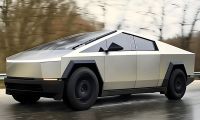Although it is still only a small step, it is a fundamental milestone that science had not achieved in 60 years of research. Nuclear fusion is the ideal way to produce energy: emission-free, inexhaustible, and eventually cheaper. If scientists finally manage to control the processes that govern it, there will be absolutely no excuse for using fossil fuels or for further polluting the atmosphere. Clean electrical energy will be the only logical source of energy: in turn, in this hypothetical scenario that is now getting closer, the only vehicles that could exist would be electric cars (and trains and ships and planes).…
The US Secretary of Energy, Jennifer Granholm, confirmed at a press conference that a team of researchers from the Lawrence Livermore National Laboratory (LLNL) in California had achieved a fundamental step to achieve the long-awaited nuclear fusion: the ignition. For a brief period of time, it was possible to "briefly simulate a star" by generating more energy than was originally invested.

Specifically, the researchers used 2.1 megajoules (MJ) to create the fusion of atomic nuclei, obtaining 2.5 MJ. A gain of 0.4 MJ that could even be 0.9 if the energy obtained reaches 3 MJ, as some information says.
Be that as it may, ignition is a fundamental step, because it means that it is possible to achieve a goal that has been sought since experimentation with this technology began 60 years ago. Fusion is a process in which multiple atomic nuclei with the same charge come together to form a heavier nucleus. The enormous amount of energy that is absorbed and released allows matter to enter what is called a plasma state (an electrically charged gas).
Nuclear fusion is the process that occurs in the Sun and other stars to produce energy. In the LLNL experiment, the same materials were used there: hydrogen atoms and two of its isotopes, deuterium and tritium. In the Sun, the fusion of nuclei turns them into helium, whose mass is less than that of hydrogen atoms. Following Einstein's equation (equivalence between mass and energy, E=mc2), the mass of hydrogen that helium lacks is converted into energy.
The main advantage of this source of energy is the absence of emissions and pollutants such as those produced by nuclear fission: a process in which unstable nuclei are split into smaller nuclei, releasing significant amounts of energy and debris in the form of radiation. In addition, there is an inexhaustible supply of elements such as deuterium, which is found in seawater and can be extracted economically; and tritium, which can be produced in fusion reactors as a by-product of the reaction.
Going back to the LLNL research team: to achieve the first part of the process it is necessary to heat the hydrogen atoms until they melt and convert into plasma. To do this, the LLNL has used a high-energy laser that impacts its beam on the atoms, so that they implode in the form of plasma, thus creating denser particles that cause fusion.
Up until now, in order to induce nuclear fusion on planet Earth it was necessary to consume more energy than was obtained, hence the value of the LLNL achievement. In addition, the process of nuclear fusion does not generate greenhouse gases or waste radioactive, as explained before.
At this point, from here "many things must be done to be able to market this energy, such as achieving many ignitions per minute and a resistant material with which to do it". The speed with which these milestones can be reached will depend on the investments dedicated to this purpose; Granholm has set the goal of “creating fusion power in the next decade” efficiently and effectively.
Kim Budil, director of Lawrence Livermore, has pointed out that private sector intervention and public funding will be needed to commercialize this method of producing energy. In a somehow ambiguous way, there is talk of "a decade" or "several decades" away, but it could "accelerate the terms" if sufficient financing is available.
But what is the relationship between nuclear fusion and electric mobility? Basically, with nuclear fusion as a source of energy production, any type of transportation would use electrical energy to function. Terrestrial transportation, of course, but also aviation and maritime navigation: the engines that will propel any of these means of transportation will logically be electric.
In time, the engines that will power all vehicles will be powered by fusion reactors, although this requires controlling the process, miniaturizing it, and making it as safe as existing mobility technologies are now. This will be the future for Tesla, Volvo, Nissan, Toyota, Mercedes Benz, Porsche, Volkswagen, Peugeot, GM, Rivian, etc., but also for Boeing, Thyssen-Krupp, McDonnell-Douglas, Mitsubishi, etc.

Electric mobility has been the great motor of sustainable development in the last decade: an increasingly cleaner, efficient and sustainable form of transportation. The combination of electric propulsion and fusion energy could be the advance that changes the world, providing us with cheap and clean energy, and no excuse not to have an electric car.
An intermediate step is to use the energy of nuclear fusion for the technologies that are known as of today, and which are already in full development. But there are two that we know of now that stand out above the rest: electrochemical batteries would continue to be an option, the way they are right now, although in order for them to continue to be used the problem of obtaining the materials with which they are manufactured must be solved; along with reusing and recycling, which must be promoted.
The other great hope that opens up with energy such as that from nuclear fusion is: hydrogen; a technology that is already maturing and that has its main drawback in the energy cost involved in its production. Making it from fossil fuels would be taking a step backwards. Green hydrogen, which is obtained from renewable energy, makes sense, but requires selecting which applications cannot be electrified by other technologies.
On the other hand, nuclear fusion offers the option of producing hydrogen directly, at lower cost and with zero emissions. This could be combined with electric propulsion in the production of fuel cells, which combine hydrogen and oxygen to generate electricity and water, allowing to store and transport energy in a secure way and without creating pollutants.
BREAKING NEWS: This is an announcement that has been decades in the making.
On December 5, 2022 a team from DOE's @Livermore_Lab made history by achieving fusion ignition.
This breakthrough will change the future of clean power and America’s national defense forever. pic.twitter.com/hFHWbmCNQJ— U.S. Department of Energy (@ENERGY) December 13, 2022
It’s clear that energy from nuclear fusion could be a great advance towards electric mobility, as it would provide a clean, abundant, and renewable energy source that is not affected by seasonal factors. It could also make fuel cells, or any other form of transportation, cheaper and more efficient. It is a technology that is becoming a reality and could upend energy production and mobility in the near future.
Source: Lawrence Livermore National Laboratory
All images courtesy of Tesla Inc.
Nico Caballero is the VP of Finance of Cogency Power, specializing in solar energy. He also holds a Diploma in Electric Cars from Delft University of Technology in the Netherlands, and enjoys doing research about Tesla and EV batteries. He can be reached at @NicoTorqueNews on Twitter. Nico covers Tesla and electric vehicle latest happenings at Torque News.












